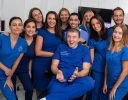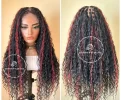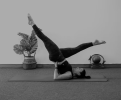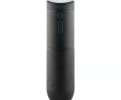What Are the Non-Surgical Ways to Get Rid of Varicose Veins?

Varicose veins are a common condition that affects millions of people worldwide. These swollen, twisted veins can cause discomfort, aching, and even serious health issues if left untreated. If you’re looking for ways to get rid of How can I get rid of varicose veins without surgery?, the good news is that there are several non-invasive treatments available today. In this article, we’ll explore these options and discuss how you can find relief from varicose veins without undergoing surgery.
What Causes Varicose Veins?
Before diving into the various treatment options, it’s helpful to understand what causes varicose veins. These veins occur when the valves inside the veins, usually in the legs, fail to function properly. When these valves weaken or become damaged, blood flows backward and pools in the vein, causing it to swell and twist.
Factors contributing to varicose veins include:
- Genetics
- Prolonged periods of standing or sitting
- Pregnancy
- Obesity
- Aging
- Hormonal changes
Understanding the root cause of varicose veins can help you make informed decisions about the best treatment plan for your needs.
Why Avoid Surgery for Varicose Veins?
While surgical procedures such as vein stripping and ligation can effectively remove varicose veins, they come with certain risks and recovery times. Many people prefer non-surgical options because they are less invasive, have minimal downtime, and carry fewer risks. Non-surgical treatments also allow individuals to resume their daily activities more quickly, which is a significant advantage for those with busy lives.
What Are the Top Non-Surgical Treatments for Varicose Veins?
There are several non-surgical treatments available for varicose veins. Depending on the severity of your condition, one or a combination of these options may be right for you.
1. Sclerotherapy
Sclerotherapy is one of the most popular non-surgical treatments for varicose veins. During this procedure, a solution is injected directly into the affected vein. This solution irritates the lining of the vein, causing it to collapse and eventually be absorbed by the body.
Benefits of Sclerotherapy:
- Minimal discomfort
- Performed in a doctor’s office
- No need for anesthesia
- Little to no downtime
- Results visible in a few weeks
Sclerotherapy is particularly effective for smaller varicose veins and spider veins. Multiple sessions may be required depending on the number of veins being treated.
2. Endovenous Laser Therapy (EVLT)
Endovenous Laser Therapy, or EVLT, is a minimally invasive procedure that uses laser energy to close off varicose veins. A small laser fiber is inserted into the vein through a tiny incision. The laser heats the vein, causing it to shrink and seal shut. Over time, the closed vein is reabsorbed by the body.
Advantages of EVLT:
- High success rate
- Performed under local anesthesia
- Quick recovery time
- Minimal scarring
- Long-lasting results
EVLT is a great option for larger varicose veins and is often preferred for veins that may not respond as well to sclerotherapy.
3. Radiofrequency Ablation (RFA)
Radiofrequency Ablation (RFA) is another advanced non-surgical treatment for varicose veins. It works similarly to EVLT, but instead of using laser energy, it employs radiofrequency waves to heat and seal the affected vein. A catheter is inserted into the vein, and the radiofrequency energy heats the vein walls, causing them to collapse and seal.
Benefits of RFA:
- Minimally invasive
- Local anesthesia
- Little to no downtime
- Effective for large varicose veins
- Less post-procedure discomfort compared to EVLT
Like EVLT, RFA is ideal for larger varicose veins, and most patients experience a significant reduction in symptoms after the procedure.
4. Compression Therapy
Compression therapy involves wearing specially designed compression stockings that apply pressure to your legs, helping veins function more effectively. These stockings encourage blood to flow upward toward the heart, reducing swelling and discomfort associated with varicose veins.
Advantages of Compression Therapy:
- Non-invasive
- No recovery time
- Can be used in conjunction with other treatments
- Affordable
While compression therapy doesn’t eliminate varicose veins, it can help manage symptoms and prevent the condition from worsening. It’s often used as a first-line treatment or as a complementary therapy after other procedures.
5. Lifestyle Changes
In some cases, making simple lifestyle changes can help reduce the appearance of varicose veins and prevent new ones from forming. Here are a few tips to consider:
- Exercise regularly: Engaging in low-impact activities like walking, swimming, or cycling helps improve blood circulation and strengthen the muscles in your legs.
- Elevate your legs: Elevating your legs when resting can help reduce the pressure on your veins and improve blood flow.
- Maintain a healthy weight: Excess weight puts additional strain on your veins, so maintaining a healthy weight can reduce the risk of varicose veins.
- Avoid prolonged standing or sitting: If you work in a job that requires long periods of standing or sitting, try to take breaks and move around to improve circulation.
While lifestyle changes alone may not eliminate varicose veins, they can significantly reduce symptoms and prevent further damage.
Who Is a Good Candidate for Non-Surgical Varicose Vein Treatments?
Non-surgical treatments for varicose veins are typically recommended for individuals with mild to moderate varicose veins who want to avoid the risks and downtime associated with surgery. However, not everyone is a good candidate for these procedures. It’s important to consult with a healthcare provider or vein specialist to determine the best treatment option for your specific condition.
You may be a good candidate for non-surgical varicose vein treatment if:
- You have mild to moderate varicose veins
- You want to avoid surgery
- You are in good overall health
- You are not pregnant
- You do not have severe vascular disease
Your vein specialist will evaluate your medical history and the severity of your varicose veins to recommend the most appropriate treatment plan.
What Should You Expect During Recovery?
One of the key benefits of non-surgical varicose vein treatments is the minimal recovery time. Most patients can return to their normal activities within a day or two. You may be asked to wear compression stockings for a few weeks after treatment to support healing and reduce swelling. It’s also important to avoid prolonged standing or heavy lifting during the recovery period.
Bruising, swelling, and mild discomfort are common after procedures like sclerotherapy, EVLT, or RFA, but these symptoms typically subside within a few days to weeks.
Conclusion: What Are Your Options for Getting Rid of Varicose Veins Without Surgery?
If you’re looking to get rid of varicose veins without surgery, there are several effective non-surgical treatments available, including sclerotherapy, endovenous laser therapy, and radiofrequency ablation. Compression therapy and lifestyle changes can also help manage symptoms and prevent future varicose veins from forming.
By consulting with a vein specialist, you can determine the best treatment plan based on the severity of your condition and your personal preferences. Non-surgical options are safe, effective, and come with minimal recovery time, making them an attractive alternative to traditional surgery.
ABOUT ME

Welcome to my blog Artcle slurp. We share latest article for all niche. If you want to publish your article then mail me on articleslurpblog@gmail.com



























